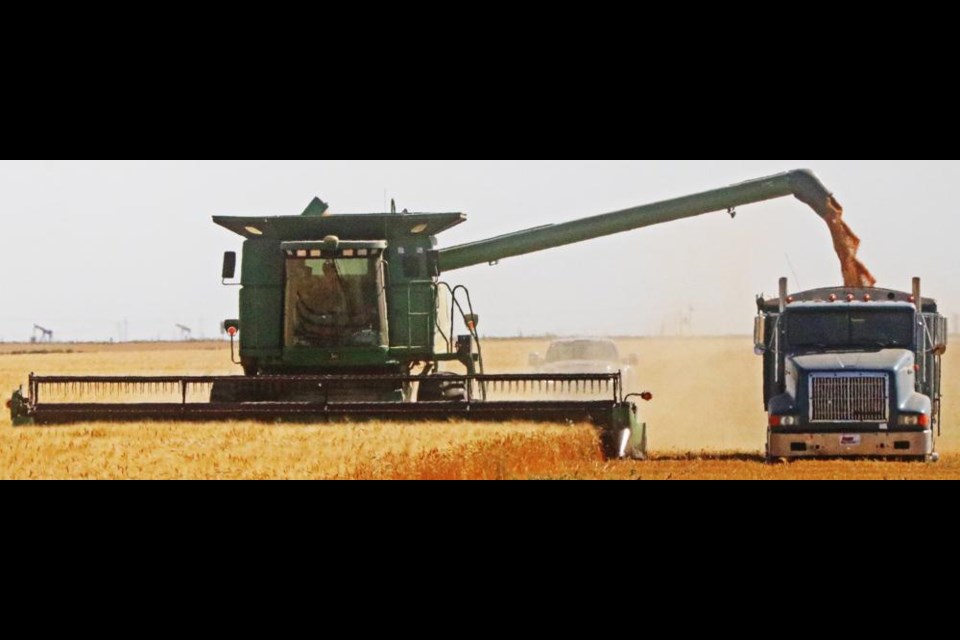WEYBURN – Producers are busy in the fields combining or swathing crops that are finally ready for harvest, with hot, dry weather over the long weekend helping crops to finish maturing and enabling harvest to continue.
There were rain showers the previous week, which delayed harvest and held crops back from ripening and drying down.
Marcel van Staveren, who farms with his two brothers in the Creelman-Griffin-Fillmore areas, said they are about half done harvest operations on their farm, as they are wrapping up their durum crops this week, and will be moving on to canola hopefully by Sept. 25.
A number of producers have noted their canola crops are still very green and there are worries about an early frost in September.
Harvest in the southeast region was at 16 per cent overall in the southeast, prior to the long weekend, with many combines out in the fields over the weekend and into this week. Another 11 per cent of the crop is swathed for ready to straight cut.
In the Weyburn area (2A crop district), harvest is 18 per cent done, and in the Radville-Lake Alma area (3ASE crop district) they are further along at 36 per cent.
Of the crops they have harvested so far, van Staveren said their red lentils are top grade in quality, but have below average yields.
Their durum crops range from No. 1 to No. 3 in quality, with above-average yields, and they are expecting their canola crops to be top grade in quality with above-average yields.
Looking at the harvest by crop in the southeast, winter wheat is 84 per cent combined with 13 per cent still standing in fields, with fall rye 69 per cent combined and 26 per cent in the field.
Spring wheat is further behind, with eight per cent combined so far, four per cent in swath and four per cent ready to straight cut. Durum has 19 per cent combined, seven per cent is ready to be straight cut and 73 per cent is in the fields.
Barley is 28 per cent combined with three per cent in swaths and five per cent is ready to be straight cut; oats are 11 per cent combined with 10 per cent in swath and seven per cent ready to be straight cut; field peas are 59 per cent combined with 11 per cent ready to be straight cut; and lentils are 50 per cent combined with 16 per cent ready to be straight cut.
Crops that have not yet been combined in the southeast include canaryseed, flax and mustard, with soybeans only seven per cent combined so far.
Multiple rainstorms resulted in up to 32 mm of rain in the Weyburn and Bienfait areas, 30 mm in the RM of Francis, 21.5 mm in the RM of Wellington, and a range of 18.6 to 21 mm in the RM of Laurier around Radville.
Van Staveren noted they are seeing excellent weather right now, but had two significant rainfalls on their Griffin-area fields last week, with two inches of rainfall in total. He pointed out that in spite of this rain, there was minimal damage to the quality of their durum crops in that area.
Topsoil moisture conditions are very good in the region with these recent storms. Cropland topsoil moisture is rated as four per cent surplus, 85 per cent adequate, eight per cent short and three per cent very short.
Hay and pasture land topsoil moisture is rated as three per cent surplus, 74 per cent adequate, 21 per cent short and two per cent very short.
Crop damage this week was attributed to heavy rains, strong winds, insects and minor hail. The largest issue was crops being lodged from the wind and rain, which may result in a poorer quality of grain and make harvest more difficulty.
Grasshoppers continue to be a large issue in the region.




